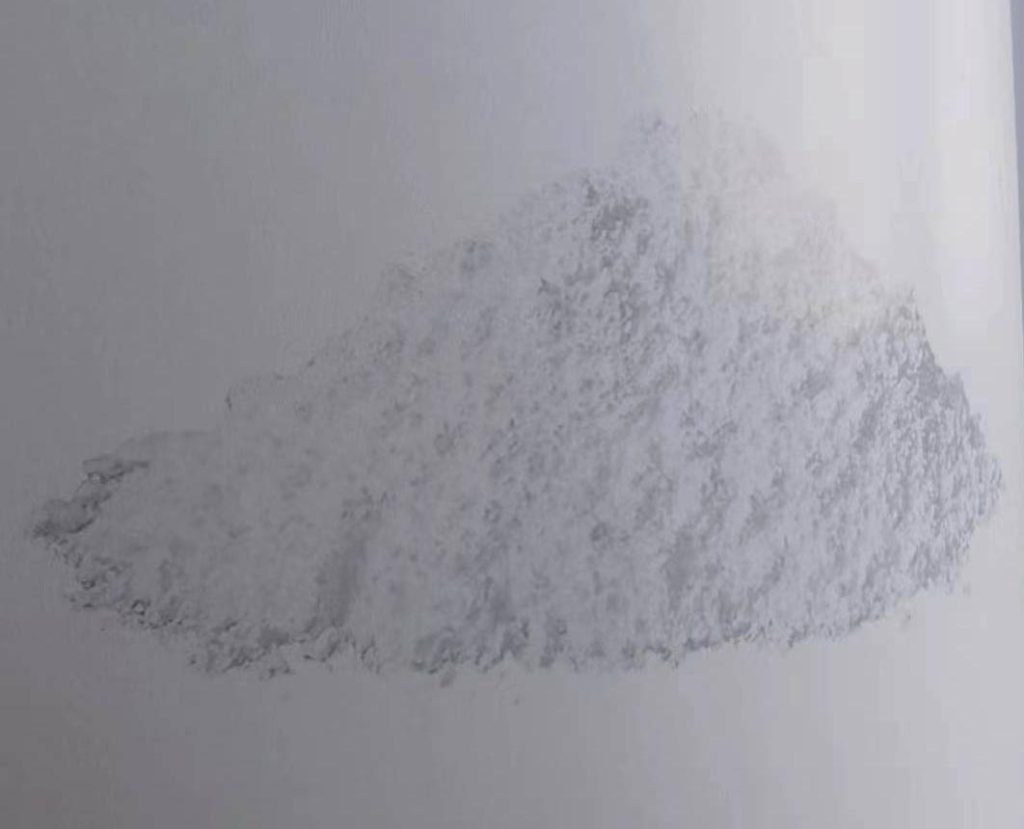Wax PE | Matting Wax
Wax PE’s unique combination of traits makes it suitable for various applications. Its low viscosity allows it to flow easily, while its high melting point contributes to its stability under elevated temperatures. Additionally, the hardness it offers makes it valuable in scenarios requiring durability.
Physical and Chemical Properties
Wax PE is present in a solid state at room temperature, which is a characteristic shared by many waxes. In Tripletchem, we usually sell powdered wax PE. The color of polyethylene wax is typically white, a neutral hue that lends itself well to various industries and applications. Matting Wax is associated with a mild, typical waxy odor, which is a result of its composition and structure.
At a temperature of 15°C, Wax PE exhibits a relative density ranging from 0.92 to 0.96. This parameter provides information about the material’s density compared to the density of water. The flash point of Wax PE, measured using appropriate methods, falls within the range of 230 to 260°C (450 to 500°F) minimum. The melting point of Wax PE is within the range of 82 to 127°C (180 to 260°F). This temperature interval represents the range at which the wax transitions from a solid to a liquid state.
Uses and Applications
Wax PE serves as an essential additive in coatings manufacturing. Its low viscosity and excellent dispersion properties make it suitable for enhancing the surface properties of coatings. When incorporated into coatings, it can impart properties like scratch resistance, gloss improvement, and anti-blocking characteristics. This is particularly valuable in industries such as automotive, wood, and packaging.
Wax PE can also be emollient and texture enhancer. Due to its compatibility with various oils and its ability to modify the texture of formulations, it is often included in products like lipsticks, lotions, creams, and makeup products. Matting Wax contributes to the smooth application, texture of cosmetics.
The application of polyethylene wax in PVC products is notable for its role in improving processability and surface quality. When incorporated into PVC formulations, Wax PE acts as a lubricating agent, aiding in the extrusion and molding processes. It reduces friction between polymer chains and processing equipment, leading to smoother production processes and improved surface finish in PVC products such as pipes, cables, and profiles.
Wax PE also plays a crucial role in the realm of inks, particularly in the printing industry. It is employed as a slip and anti-blocking agent in printing inks. By reducing the coefficient of friction between printed surfaces, Matting Wax helps prevent issues like ink smudging and offsetting. This ensures higher-quality print results and smoother post-printing processes.
PE wax hs code 34049020
Stability and Reactivity
Wax PE is characterized by a lack of reactivity with both air and common materials. This inert nature means that it doesn’t readily participate in chemical reactions with its surroundings. Wax PE maintains stability, meaning it remains unchanged without undergoing significant alterations or decomposition. This makes it stable and predictable in various manufacturing processes.
Excessive heat is a factor to be cautious of when dealing with polyethylene wax. Extremely high temperatures might impact its physical properties or cause melting, potentially affecting its performance and the intended application. It is advised to avoid strong oxidizers when handling Matting Wax. Strong oxidizing agents can initiate chemical reactions that may compromise the integrity of the wax or result in unexpected reactions.
In specific conditions, the decomposition of PE Wax can lead to the formation of certain byproducts, including carbon monoxide, carbon dioxide, and combustible gases. These byproducts can be generated when the wax is exposed to high temperatures or extreme conditions.
Proper Handling of Wax PE
It’s advisable to avoid breathing in fumes generated during the heating process of Wax PE. These fumes might lead to respiratory tract irritation. Adequate ventilation and respiratory protection should be employed when working with heated Wax PE to mitigate any potential inhalation hazards.
In the event of spillage, precautions should be taken to prevent accidents due to slippery surfaces. Spilled PE Wax can cause floors to become slippery, increasing the risk of falls. Proper cleaning and prompt removal of spills are essential to maintain a safe working area.
In its powder form, Wax PE has the potential to generate static electricity. This static charge can accumulate and create a risk of explosions. Adequate grounding measures and precautions against static discharge are crucial when working with powdered polyethylene wax to prevent any hazardous situations.
During the handling of powdered polyethylene wax, there’s a possibility of generating dust. This can lead to respiratory discomfort or contribute to poor air quality. Using adequate ventilation or dust control measures is recommended to minimize these effects.
Employing appropriate personal protective equipment, such as gloves, protective clothing, and respiratory protection, is essential when working with Wax PE, especially in scenarios involving heating or potential exposure to fumes. Training personnel on proper handling procedures and emergency response protocols further enhances safety.
Proper Storage of Wax PE | Matting Wax
It’s important to avoid subjecting Wax PE to excessive heat. High temperatures can lead to melting or alterations in its physical properties. Storing Wax PE in a cool and dry environment, away from direct sunlight and heat sources, helps preserve its stability and integrity.
Wax PE should be stored away from strong oxidizing agents. Oxidizers have the potential to react with PE wax, which might result in undesirable chemical reactions or the degradation of the wax’s properties. Storing Wax PE separately from oxidizing agents prevents any unintended interactions.
For routine storage and everyday handling, general ventilation is usually sufficient. This helps maintain a well-ventilated environment that prevents the accumulation of fumes or dust and contributes to a safe working area.
Proper storage of Wax PE ensures that its quality and effectiveness are preserved over time. By following to these guidelines, individuals can prevent unintended chemical reactions, physical changes, or exposure to potentially harmful conditions.
Proper Disposal of Wax PE
Tripletchem suggests that suitable methods for disposing of PE wax include supervised incineration, preferably with energy recovery, or appropriate recycling processes that align with relevant regulations and the specific characteristics of the material at the time of disposal. Please ensure that the disposal methods chosen are in line with legal requirements and take into account the nature of the material itself.
The formulation of the PE wax does not include materials that are listed as hazardous wastes. Wax PE does not exhibit hazardous traits related to ignitability, corrosivity, or reactivity, and it does not contain contaminants as determined by the Toxicity Characteristic Leaching Procedure. However, it’s important to note that the status of the product may change when it has been used.
Wax PE containers might still contain residue and could be hazardous. It’s advised not to attempt refilling or cleaning these containers without proper instructions. When dealing with empty drums, they should be thoroughly drained and stored safely until they can be properly reconditioned or disposed of. The recommendation is to send empty containers for recycling, recovery, or disposal through contractors or entities that are qualified and licensed to handle such materials in accordance with governmental regulations.
China pe wax price
What to do in Accidental Spillage of Wax PE
In the case of an accidental spill or release, it is advised to promptly notify the relevant authorities as per the regulations that apply. Any releases of this material into the environment that surpass the designated reportable quantity, or any spills that could potentially reach waterways, including intermittent dry creeks, must be reported.
For spills that occur on land, the recommended approach is to allow the spilled material to solidify, after which it can be collected by scraping it up using shovels. The collected material should then be placed into a suitable container for recycling or disposal. This method helps to prevent the spread of the spilled material and facilitates its safe removal from the affected area.
In the case of spills involving water, the first step is to try to stop the leak of wax PE if it can be done safely. To contain the spill, booms should be deployed immediately to prevent the spread of the material. Other shipping in the vicinity should be alerted to the spill to prevent further contamination. The spilled material should be skimmed from the surface of the water to prevent its dispersion.
pe wax manufacturers
Why Choose Tripletchem as Wax PE Supplier
We at Tripletchem boasts a track record of excellence in producing and supplying wax PE. We are known for adhering to stringent quality control standards, ensuring that the wax PE we offered meets the required specifications and performance expectations. This commitment to quality translates into consistent and reliable products that customers can depend on for their manufacturing processes.
Tripletchem’s experience and expertise in the field of wax PE set it apart. Our knowledge of the properties and applications of PE wax enables them to provide valuable technical support and guidance to customers. Whether customers require assistance in selecting the appropriate grade of wax PE for their specific needs or need advice on optimizing formulations, Tripletchem’s knowledgeable team can offer valuable insights and solutions.

